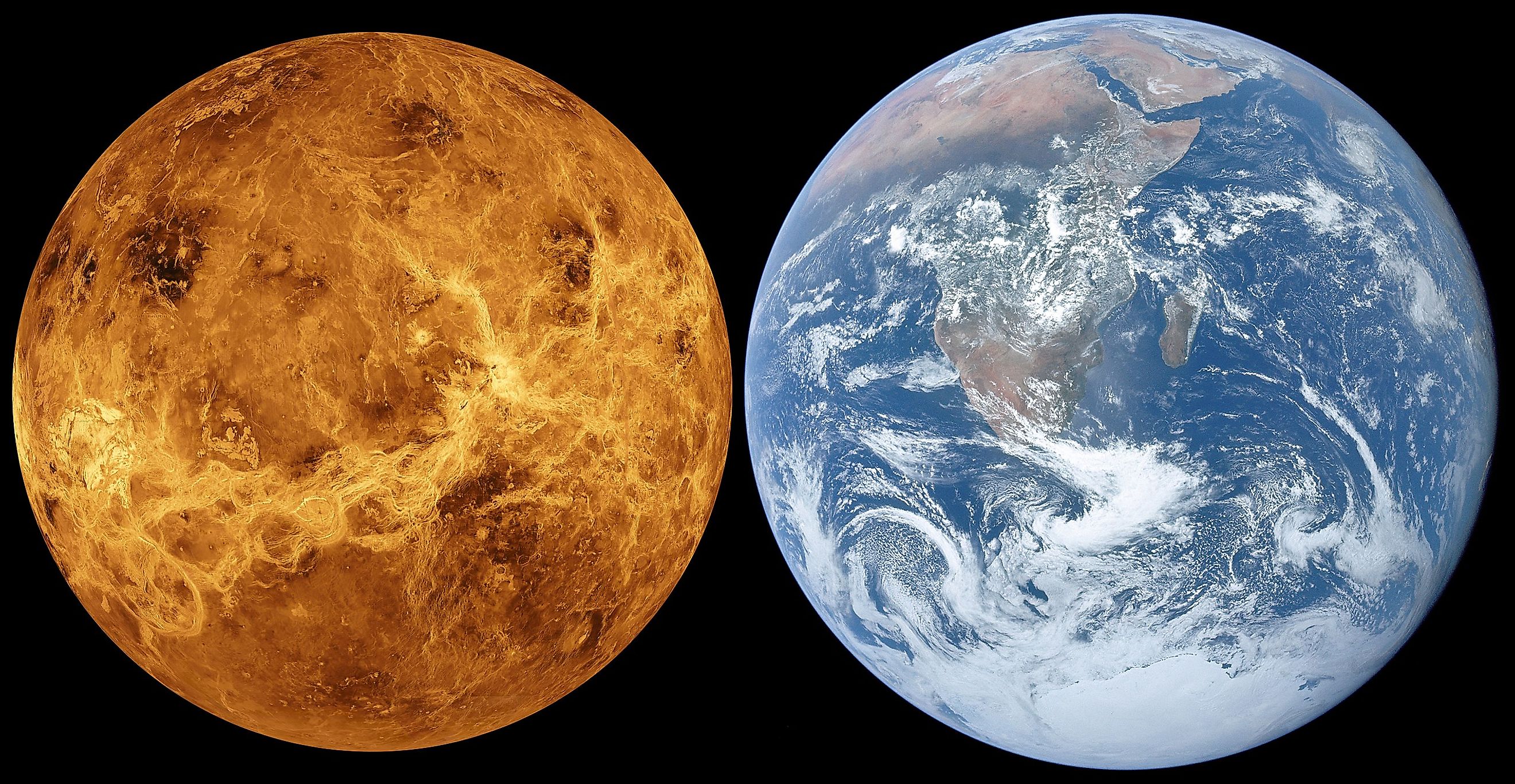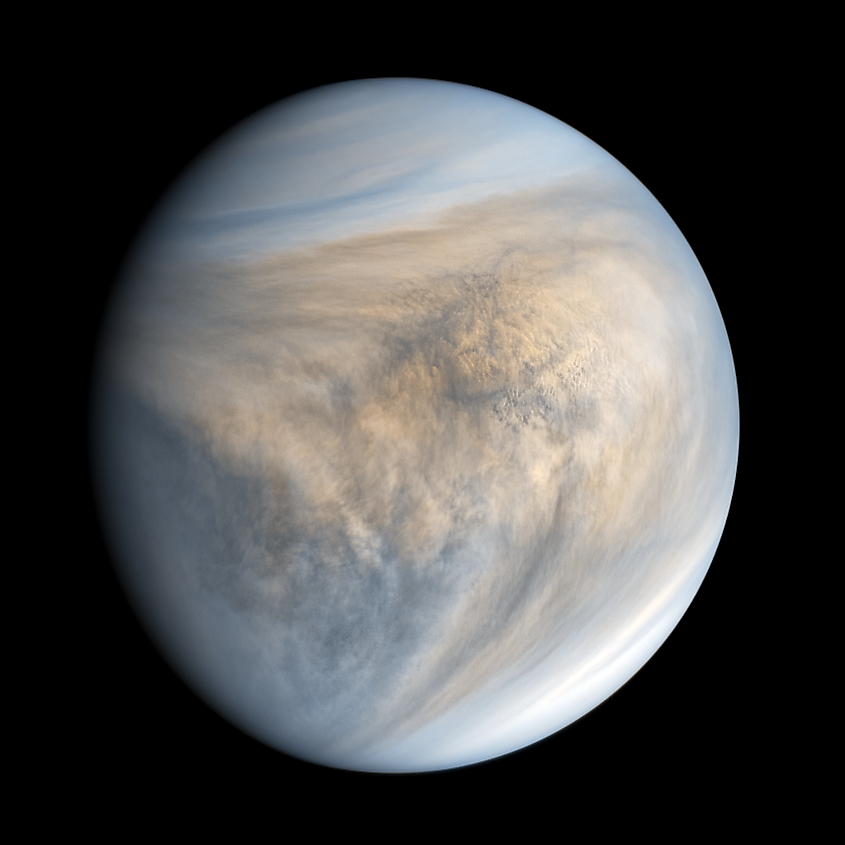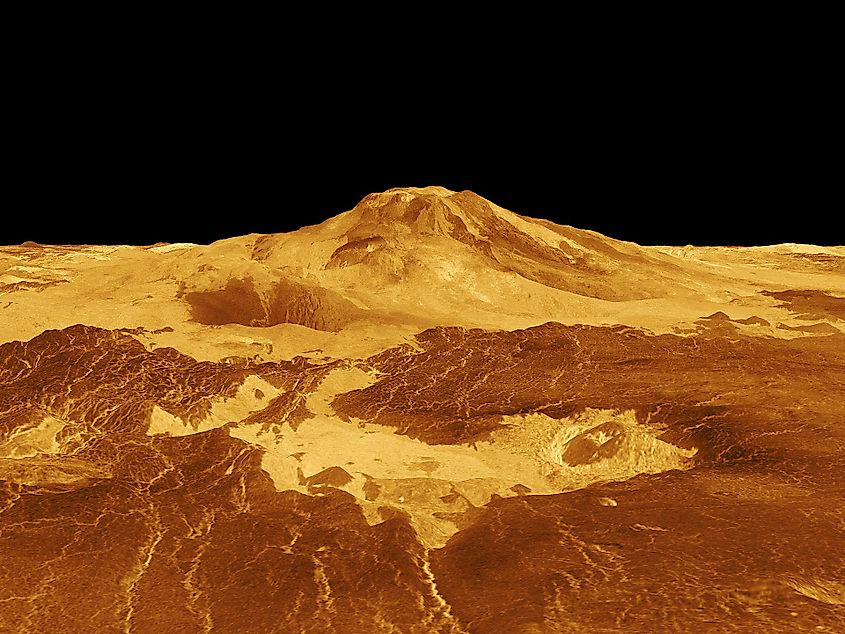
Was Venus More Earth-Like In The Past?
Venus is the closest planet to the Earth, located at an average distance of 67-million miles (108-million kilometres). It is also the most similar planet to the Earth in terms of size and mass, being 95% the size of Earth and 81% as massive. In terms of composition, the two planets are also quite similar to one another, likely due to the fact that they formed in and around the same region of the solar system. Despite these similarities, however, Earth and Venus are like polar opposites of each other, with Venus sometimes being referred to as Earth’s evil twin. While the Earth has stable surface temperatures, vast oceans, and a life-giving atmosphere, Venus is blanketed in a dense atmosphere of carbon dioxide that creates a runaway greenhouse effect. Venus may not be the closest planet to the sun, yet it does have the highest surface temperature of any planet in the solar system, averaging at a scorching 900-degrees Fahrenheit (475-degrees Celsius). However, evidence suggests that things were not always this way for Venus. Billions of years ago, it may have had a breathable atmosphere and oceans of liquid water. What happened to Venus?
Volcanism On Venus

Although Venus is located closer to the sun than the Earth, it was once located within the boundaries of the sun’s habitable zone. Over time, the sun gradually gets hotter, and in the past it was cooler than it is today. This also means that the location of the habitable zone changes over time, and in the past, it was located closer to the sun. When Venus first formed, it would have been located within the habitable zone, and evidence suggests it likely developed habitable conditions along with the Earth. Liquid water would have existed in abundance, and the atmosphere would have been stable. Interestingly, scientists believe that Venus may have possessed habitable conditions for at least the first 2-billion years after its formation. Things obviously did not stay this way forever, and although its distance from the sun was likely a factor, there is another reason why Venus is the way it is: volcanism.
The Earth experiences volcanic eruptions every year, yet most are rather small. When volcanoes do erupt, they can send massive amounts of carbon dioxide into the atmosphere. Here on Earth, volcanoes do not tend to add overwhelming amounts of carbon dioxide into the atmosphere, yet there have been massive eruptions in the past that have destabilized Earth’s climate. Thankfully, the Earth has developed multiple cycles that gradually stabilize conditions, such as the carbon cycle. Even if a massive eruption destabilizes Earth’s climate, things eventually stabilize. Like Earth, Venus is also a volcanically active world, yet its eruptions are unlike anything on Earth.
The surface of Venus is dominated by volcanic structures. In fact, about 90% of the planet’s surface is volcanic basalt. This suggests that Venus undergoes volcanic events that cover the entire planet, an event known as global volcanism. A single global eruption in the past would have added so many greenhouse gasses to the atmosphere that the surface temperature of Venus would have skyrocketed, with temperatures eventually becoming so high that all of the surface water began to evaporate. Water vapor is also a greenhouse gas, and so Venus would have found itself experiencing a positive feedback loop, wherein the emission of greenhouse gases leads to the emission of more greenhouse gases. Once the oceans disappeared, Venus lost one of its largest carbon sinks as vast bodies of water can absorb carbon dioxide. With the loss of one of its largest carbon sinks, the amount of carbon dioxide could only go up. Thus, these global volcanic events led to the world that Venus is today.
Possible Causes

It remains unknown exactly how Venus could experience such massive waves of volcanic eruptions, yet it likely has to do with the fact that, unlike Earth, Venus does not have plate tectonics. On Earth, volcanoes tend to form along the boundaries between tectonic plates, and tectonic activity tends to cause volcanic eruptions. Venus, however, is a one-plate planet, and with no boundaries, Venus has no way of releasing geologic pressure over time. Rather, this pressure simply builds and builds, and eventually the pressure becomes so high that most of the volcanoes on Venus erupt at around the same time.











